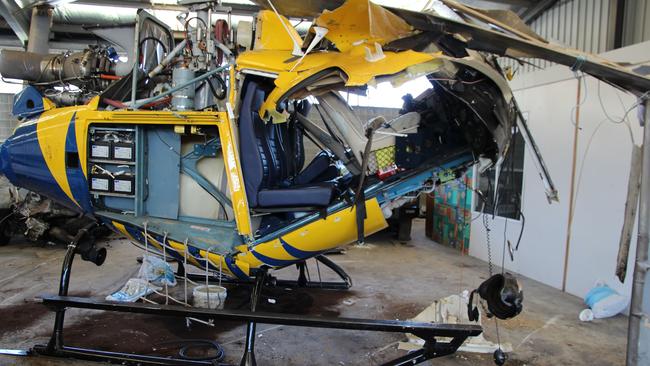Transport and Safety Bureau investigation details what caused fatal 2017 Hobart Airport helicopter crash
Key findings into a 2017 fatal Hobart Airport helicopter crash have been released, revealing what contributed to the chopper’s fall.

Tasmania
Don't miss out on the headlines from Tasmania. Followed categories will be added to My News.
- The funeral service for veteran Hobart pilot Roger Corbin, who died in a helicopter crash
- EDITORIAL: TASMANIA has lost a genuine hero in helicopter pilot Roger Corbin, who died in a training accident at Hobart airport on Tuesday afternoon.
FLIGHT manual safety warnings were not followed and a preflight safety briefing was not conducted, an investigation into a fatal Hobart Airport helicopter crash has found.
The Australian Transport and Safety Bureau (ATSB) on Wednesday released its final report from the investigation into the 2017 crash of an AS350 Squirrel helicopter at Hobart Airport, which killed flight instructor Roger Corbin.

The pilot under instruction sustained serious injuries in the crash.
The investigation found Mr Corbin and his student were conducting landing practice in an emergency with hydraulic assistance disabled at the time of the crash.
The AS350 flight manual stipulates that in order to ensure control following a hydraulic system failure a shallow approach should be made into wind and the helicopter should not enter a hover.
It was determined that the helicopter entered a high hover without hydraulics with a crosswind which made the chopper uncontrollable, ATSB Director Transport Safety Stuart Macleod said.
“The AS350 flight manual notes that without hydraulics the helicopter is subject to rapid changes in control direction and force,” Mr Macleod said.
“Compliance with the AS350 flight manual requirements following a real or simulated hydraulic failure ensures that the helicopter remains controllable during all phases of flight.”
Mr Macleod said a 1997 flight test evaluation of the same helicopter model found hovering without hydraulics would subject the chopper to “random perturbations and a reduction in control authority”.
“This and many other similar accidents illustrate that hovering an AS350 without hydraulic assistance can lead to a rapid, catastrophic loss of control even for highly experienced pilots,” he said.
The investigation also detailed that a preflight briefing was not conducted before the flight, which Mr Macleod said may have led to confusion over roles in controlling the helicopter as the emergency progressed.
“This accident’s rapid development reinforces the need for a clear understanding and co-ordination between instructor and student when conducting hazardous activities such as simulated system failures,” Mr Macleod said.
The operator has since undertaken a number of safety measures, including updating the training school’s operations manual with stricter controls on performing AS350 sequences in line with flight manual requirements.
The ATSB pointed out that last year the helicopter’s manufacturer, Airbus Helicopters, released a Safety Information Notice and accompanying educational video covering hydraulic failure training in the AS350.


